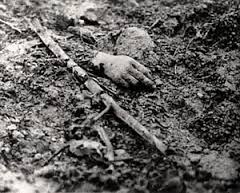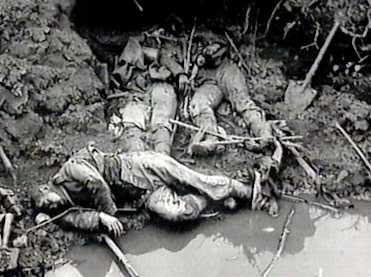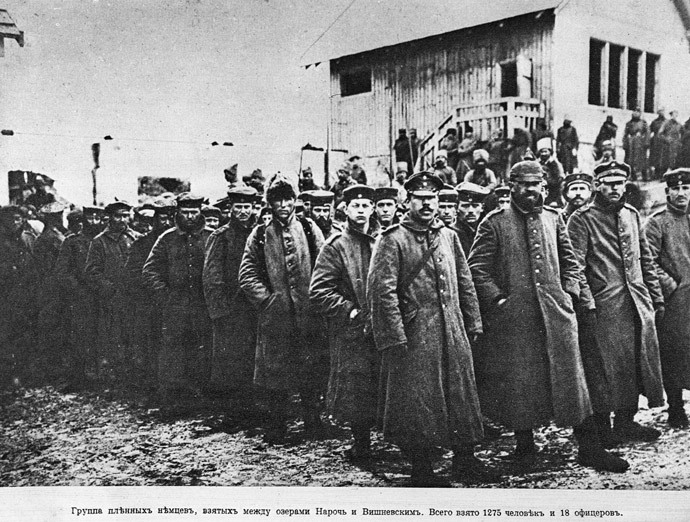Vast Bloodletting at Verdun in France, Naroch in Russia.
The Most Mismanaged Battle of the War; Russian Defeat Threatens Mutiny.
Special to The Great War Project
(3-6 April) Significant news from the battlefields on both the Western and Eastern Fronts.
In the West, the main battle is still at Verdun – which begins in February and will become the First World War’s longest battle.
The tragic toll of dead and wounded is skyrocketing.
“By the end of March,” reports historian Martin Gilbert, “the toll of dead and wounded there had reached 89,000 French and 81,607 Germans. On April 1st a century ago, the German Kaiser declares, “This war will end at Verdun.”

An image of the dead at Verdun, 1916
He is wrong, and it does not. A few days later, the Germans are driven back once again. The same day, General Philippe Petain, the French commander at Verdun, who at the beginning of the battle declared “They shall not pass,” now according to Gilbert, “exhorts his troops” ‘Take courage, we’ll get them.’”
And they do. “At the beginning of April,” writes war historian John Keegan, “[German General] Erich von Falkenhayn’s belief that he could win a victory of attrition without exposing his own army to comparable loss was fading.”
So at this moment in the war a century ago the Germans shift strategies. They decided “to abandon the strategy of limited offensive and attack across the extent of the whole front, now nearly twenty miles wide.”

An image of the battlefield at Verdun, circa 1916. The battle there goes on and on.
The new German offensive is to begin in a few days.
In the East, the battle rages around Lake Naroch, in Eastern Russia (now Belarus). It begins in mid-March 1916, and by now, it is coming to an end.
The Russians launch the attack under pressure from the French command, who insist on it to draw German troops away from the French desperate circumstances at Verdun.
“It was a copy-book example of how not to do things,” writes historian Norman Stone. “The troops were marched over snow, easily spotted by German aircraft; even the cooks in headquarters were discussing when the offensive would take place.”
“On top of everything else,” Stone reports, “there was a row between light artillerists and heavy artillerists, with no cooperation, and the initial bombardment was ineffective.”
Like so many battles in this war, Stone reports, “After 100,000 casualties and no gains, the attack was called off.”
Stone considers Lake Naroch “the worst-managed battle of the entire war.”
“After Lake Naroch, the Russian northern armies did next to nothing for a full year and a half – bored, badly fed, drinking on empty stomachs foul stuff brewed in secret; the very prescription for a mutiny, which was duly to happen on an enormous scale.”
It goes without saying that the goal of the offensive – to relieve pressure on the French army at Verdun – is a total failure.

German POWs on the Russian front at Naroch, 1916.
By the time the battle at Naroch ends in early April, war historian Keegan reports, “Russian losses totaled 100,000, including 12,000 men who had died of exposure in the harsh late-winter weather.”
